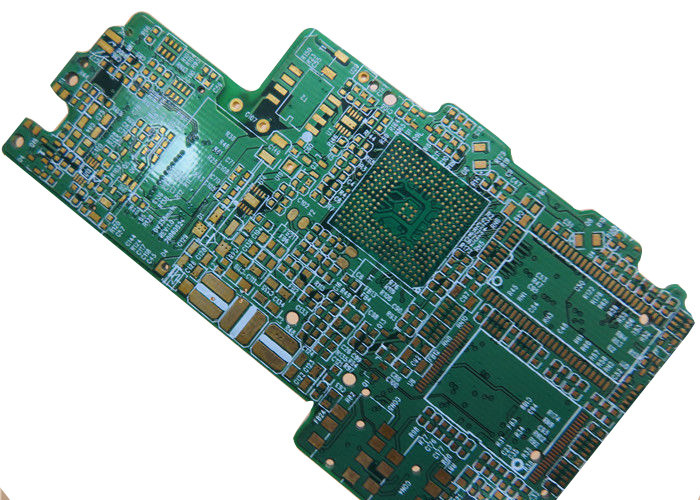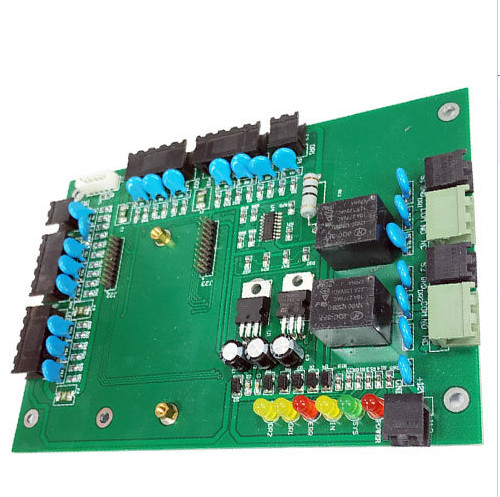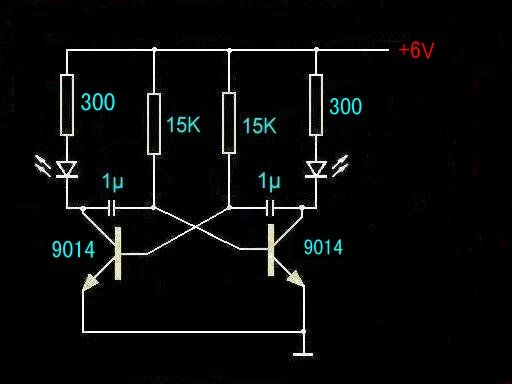
FR-4 must be known before PCB board
1. FR-4, also written as FR4, is both a name and a standard grade
The organic substrate material used to make PCBs consists of 3 components: resin, reinforcement material, and conductive copper foil. [1]
Composition of FR-4 Copper Clad Laminate
FR-4 as a name, it is suitable for the use of glass fiber cloth as a reinforcing material in the manufacture of printed circuit boards, and the resin system is a collective name for epoxy resin laminates, emmm, which is similar to saying hello to old wu on the streets of Guangdong , Shout out pretty boy, anyone on the street who thinks they have something to do with looks will turn around and smile at you
Similar to the term pretty boy, FR-4 is just a general term for a type of board. The fiberglass cloth is electronic grade fiberglass woven into a thin, cloth-like material. Glass fibers give FR-4 the necessary structural stability. This fiberglass cloth is surrounded and bound by epoxy resin with flame retardant additives. The resin gives the material its rigidity, among other physical properties.
The FR-4 specification is formulated by NEMA (National Electrical Manufacturers Association), and the commonly used PCB NEMA substrate grade classification is shown in the table below
Common NEMA PCB Substrate Classifications
FR in the NEMA classification standard means Flame-Retardant (flame retardant) or Fire-Resistant (fireproof), that is, the fire rating, so the FR grade boards are all flame retardant boards, and the number "4" means that the material To distinguish it from other materials of the same level, 4 means that the resin is epoxy resin, the reinforcement material is glass fiber cloth, and the flame retardant grade is UL94 V-0. The flame retardant grades of FR-1, FR-2, and FR-3 are UL 94V-1, and the resins and reinforcing materials used are also different.
In the 1950s, paper-based phenolic copper-clad substrates came out and were widely used in electrical equipment such as radios and televisions. However, this material has low electrical insulation and is not flame-retardant. At that time, there were many fire accidents caused by electrical failures of TV sets in the United States, so NEMA divided different PCB substrate grades for electrical safety considerations, mainly based on the flammability, high temperature stability and hygroscopicity of circuit board substrates. And other indicators are graded, but the electrical properties of the base material, such as dielectric constant and loss tangent, are not specified.
Lao Wu wants to emphasize here that FR-4 is only a grade in the NEMA substrate grade classification, which only represents the material category, not the specific material. A common problem is that FR-4 is often confused with a specific dielectric. For example, the FR-4 material in our simulation software has a default dielectric constant of 4.2 and a loss tangent of 0.02, but many low-to-medium loss plates Also FR-4 grade material.
Wu mentioned at the beginning of the article that it seems that FR4 is a must in the board warehouse of every board factory. Why is FR4 so favored by the board factory?
2. Why FR4 is the standing board of PCB board factory
The most widely used PCB boards were paper phenolic copper-clad substrates, such as XPC and XXXPC, because the price of the materials is relatively cheap, but they are non-flame-retardant materials. After the fire accidents caused by circuit failures in the 1970s, the main The electrical equipment began to use flame-retardant substrates, and the use of paper-based phenolic copper-clad substrates FR-1 and FR-2 with flame-retardant properties gradually exceeded that of non-flame-retardant XPC and XXXPC substrates.
In the 1980s, multimedia portable devices became popular, such as walkmans, BP players, etc. PCBs began to develop towards miniaturization and high density, and the application of multilayer PCBs became more and more common, which in turn led to the development of PCB substrates.
Although paper substrates such as XPC and FR-1 are cheaper than epoxy glass fiber cloth substrate FR-4, they are not as good as FR-4 in terms of moisture absorption, heat resistance and mechanical strength. In the early days, paper substrates were usually used in price-sensitive consumer products while FR-4 was more used in industrial products.
But as consumer devices move toward smaller, lighter, and thinner devices, the use of FR-4 sheet is increasing. As PCBs with a standard thickness of 1.6 mm to 0.8 mm come into widespread use, the mechanical strength and moisture resistance of the paper substrate becomes a problem. In addition, paper substrates are not suitable for the production of multilayer boards, and with the development of equipment miniaturization, PCB wiring density is getting higher and higher, and the market share of multilayer boards is also increasing. Therefore, despite the relatively high cost of FR-4 panels, consumer products are still gradually turning to FR-4 panels.
Another important reason why PCB model factories widely choose FR-4 instead of lower-cost paper substrates is that paper substrates are not suitable for drilling, but only for punching, while FR-4 is very easy to process.
With the continuous expansion of the production capacity of materials such as epoxy resin and glass fiber cloth, the current standard FR-4 substrate is already a low-cost material with excellent mechanical properties and excellent processability, making it popular all over the world. Popular with manufacturers of low- and low-cost electronics.
Speaking of boards, Lao Wu thought of this article about PCB quality last month: PCB prices have started to drop, but what about the quality?
Nowadays, with the intensification of price competition, all kinds of cutting corners and materials emerge in an endless stream, which virtually increases the risk of customers' product quality. Of course, Jialichuang has always promised to provide true A-grade boards, drawing a clear line from low-grade, less fabric, and non-flame-retardant materials, and fully guaranteeing product quality. This is one of the reasons why Lao Wu loves Jialichuang.
In addition, Jialichuang has provided board quality inspection services for a long time, and can issue free inspection reports for reference. Whether it is a PCB produced by Jialichuang or not, you can send it for testing. If you need it, you can experience it.
Enter Jiali Chuang order assistant, find the option of "Sheet Inspection Service" on the left side of the page, click "I want to apply for inspection", and fill in according to the process (as shown in the figure below).
3. Performance index of FR-4
The FR-4 substrate is an epoxy resin system, so for a long time, Tg value is the most common index used to classify FR-4 substrates, and it is also one of the most important performance indicators in the IPC-4101 specification.
Glass transition temperature Tg
The Tg value of a resin system refers to the temperature transition point at which the material changes from a relatively rigid or "glassy" state to a deformable or softened state. This thermodynamic change is always reversible as long as the resin does not decompose. That is, when a material is heated from a normal temperature state to a temperature above the Tg value, and then cooled below the Tg value, it can change back to a rigid state with the same properties as before. However, when a material is heated to temperatures well above its Tg, irreversible phase changes can result. The effect of this temperature has a lot to do with the type of material and also with the thermal decomposition of the resin.
Generally speaking, the higher the Tg of the substrate, the higher the reliability of the material. If the lead-free soldering process is adopted, the thermal decomposition temperature (Td) of the base material also needs to be considered.
Other important performance indicators include coefficient of thermal expansion (CTE), water absorption, adhesion properties of the material, and commonly used delamination time tests such as T260 and T288 tests. [1]
4. Diversity of FR-4
Glass fiber cloth is used as a reinforcing material, the resin system is epoxy resin and the base material with a flame retardant rating of UL 94V-0 is FR-4. Is there any specific distinction between such a large class of materials?
Divide according to Tg value
The most obvious difference between FR-4 materials is the Tg value. According to the Tg temperature, FR-4 sheets are generally divided into low Tg, medium Tg and high Tg sheets.
In the industry, FR-4 with a Tg of about 135°C is usually classified as a low Tg sheet; FR-4 with a Tg of about 150°C is a medium Tg sheet; and FR-4 with a Tg of about 170°C is classified as a high Tg sheet.
If there are many pressing times during PCB processing, or the number of PCB layers is large (more than 14 layers), or the soldering temperature is high (≥230°C), or the working temperature is high (over 100°C), or the welding thermal stress is large (such as wave soldering) , should choose high Tg plate.
According to loss
FR-4 can be divided into:
Ordinary loss plate (Df≥0.02)
Medium loss plate (0.01<Df<0.02)
Low loss plate (0.005<Df<0.01)
Ultra-low loss sheet (Df<0.005)
by supplier
The FR-4 grade materials of different board suppliers will also have different performance differences, and the FR-4 grade of the same supplier also has different product specifications. Therefore, the most accurate specification for the selected board is accurate to The specific product name of the specific material supplier.
5. The skill of choosing FR-4 material correctly when placing an order in Jiali Chuang

Jiali Chuang currently provides three types of panels, namely FR-4, aluminum substrates, and thermoelectric separation copper substrates. Care should be taken to select the appropriate material type when placing an order.
When selecting the right laminate, a combination of electrical, mechanical, chemical and thermal properties needs to be considered. But in general scenarios, medium and low TG FR-4 can be fully satisfied.
For PCBs with a high number of layers, Jialichuang currently provides high Tg FR-4 for selection. For example, Jialichuang’s "High Multi-layer and High-precision PCB Manufacturing" currently provides PCB manufacturing capabilities up to 20 layers. . Of course, Jialichuang also provides high Tg, low CTE boards to meet the challenges of high-layer PCB manufacturing.







